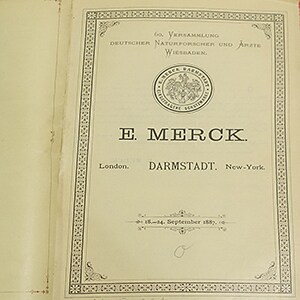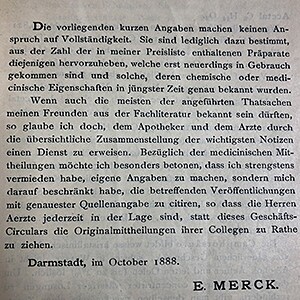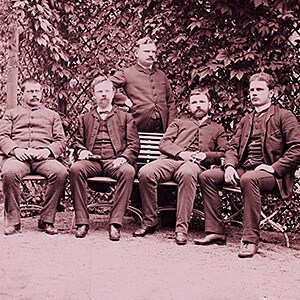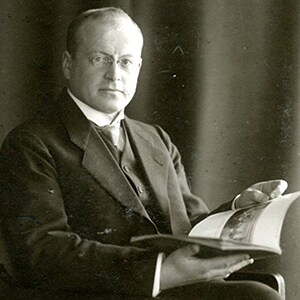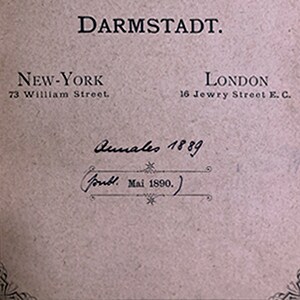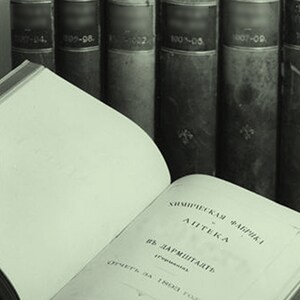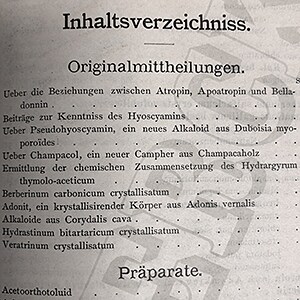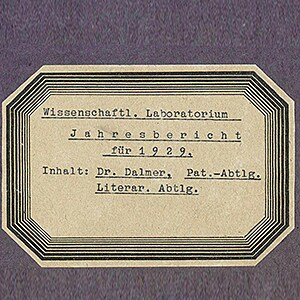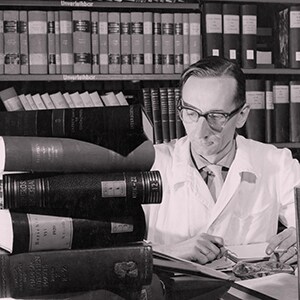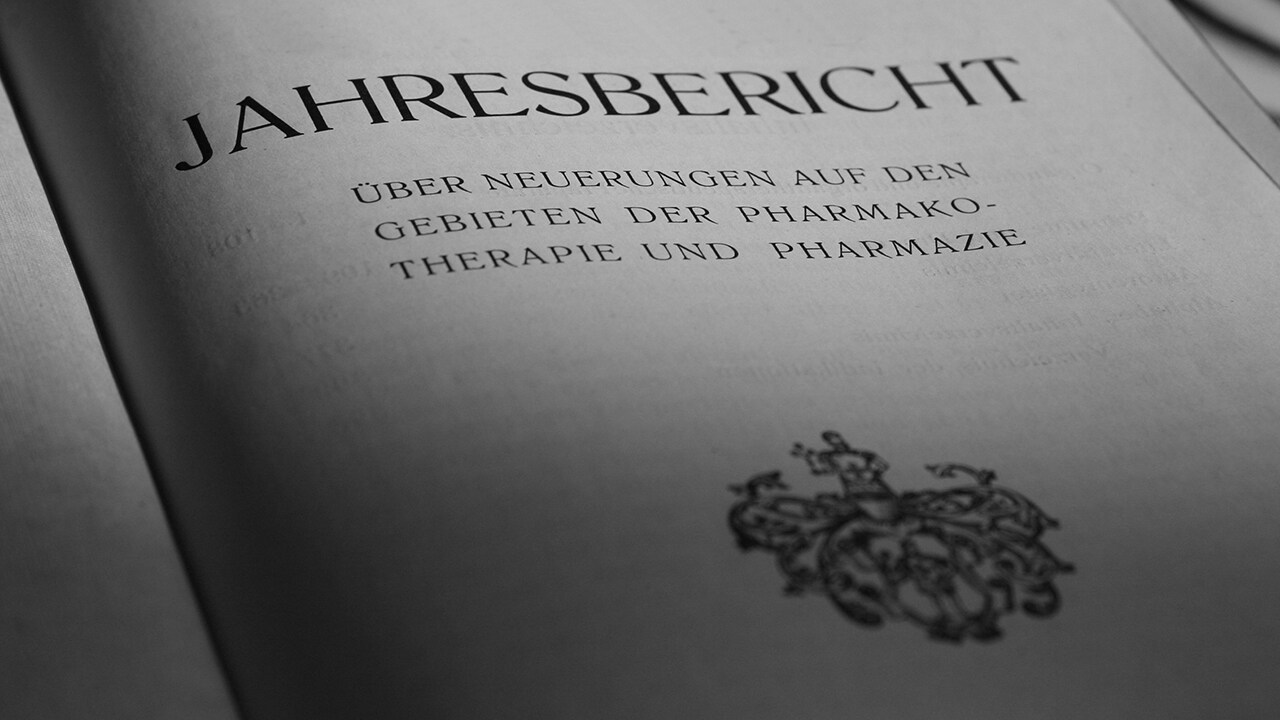
»The fact remains incomprehensible to some that the annual pharmacy review is not, and is not intended to be, an advertisement. It fulfills only the selfless duty of guiding my friends on all valuable knowledge in the fields of pharmacotherapy, and not only on the brands of my provenance.«
From the preface of volume 25, 1901
For pharmacists specializing in pharmaceutical and medical history, the »Annual Pharmacy Reviews« of E. Merck, Darmstadt, Germany, represent an irreplaceable source. The publications issued between 1887 and 1957 provide information on contemporary »innovations in the fields of pharmacotherapy and pharmacy«.
The foreign language versions reflect the company’s extensive international business relationships. Discontinued owing to the war and inflation, the publication of foreign-language editions in English, French, Spanish, and Portuguese resumes with a total circulation of 44,000 in 1927 in the course of the 100th anniversary of the company’s transition to industrial production.
E. Merck, Darmstadt, Germany, devotes a considerable amount of personnel resources to the preparation of the annual pharmacy reviews. In its final year, five mostly unnamed research assistants – three pharmacists and two physicians – sift through the flood of journal publications. The »E. Merck’s Annual Pharmacy Reviews« have a high standard of neutrality. In 1901, the company refuses to allow itself »to be undiscerningly lumped together in certain journals and books with the commercial and pharmaceutical reviews of other companies«.
In fact, E. Merck, Darmstadt, Germany, succeeds in meeting the standards it has set for itself, which contemporaries acknowledge. In 1937, the Berlin-based pharmacologist Wolfgang Heubner, who is regarded as being quite critical, writes that for five decades now, these annual pharmacy reviews have »managed to maintain a voice of distinguished, impartial objectivity, which fits so well with the scrupulousness of the information on innovations presented in scientific literature. Findings from the company’s own experimental research shine not through the written word, but rather by virtue of their true meaning alone. It is this intellectual approach through which the E. Merck, Darmstadt, Germany, scientific annual reports garner the highest degree of trust everywhere; anyone who is familiar with them, who has sought and found advice from them, will graciously never dispense with them«.
The latter applies today for science historians also with respect to the fact that the publication reflects actual pharmacotherapy practice, i.e. also provides information about polypragmasy and polypharmacy. They thus convey a more realistic picture than textbooks and manuals, which offer pharmacologically substantiated facts from the perspective of university physicians. Therefore, the preface to the 50th volume still resonates well with pharmaceutical and medical historians today. It states that the »annual pharmacy reviews [of E. Merck, Darmstadt, Germany] have always been and still are a unique contribution to the pharmaceutical-medical literature«.
The annual pharmacy reviews are sent free of charge to physicians, hospitals, pharmacists, universities, and even competitors. The German edition begins with 15 pages in 1887, the two editions published during the war years 1915 and 1916 have even more than 500 pages. Responsibility lies with the partners of the eighth generation.
Those who are familiar with the annual pharmacy reviews »will graciously never dispense with them«, writes Wolfgang Heubner, a pharmacologist. Until 1900, the German edition has a print run of 8,000, after which its circulation rises to 20,000 copies. In addition, 10,000 copies of the English-language editions are dispatched, as are 5,000 copies both the French and Russian editions.
The indexing of the reviews is aided by a substance register, an increasingly differentiated list of indications since the year 1893, and occasionally a list of the cited authors. Lists of references are given so that users can always consult the underlying original literature.

